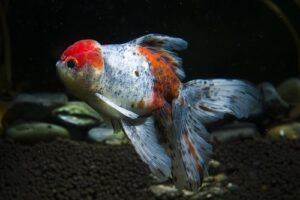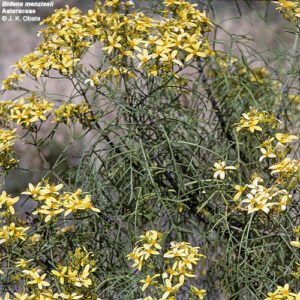In "Partner Perspectives" we get to know the diverse people, roles, and views of fire management in the Pacific. Rhonda Loh kindly spent some time with us discussing her experience and career at Hawaii Volcanoes National Park.
Name: Rhonda Loh
Role: Chief of Natural Resources Management
Organization: Hawaii Volcanoes National Park
Pacific Fire Exchange (PFX): How would you describe your role at the Park?
Rhonda (RL): I’m the Natural Resources Manager at Hawaii Volcanoes National Park and I direct programs to protect and restore native ecosystems and species. There’s a history of wildland fires in the Park and part of my job is to understand the impact of these fires, work with scientists to conduct studies, and develop mitigation to minimize negative impacts. My team works closely with our Fire Management Program and Fire Management Officer and helps develop specific management goals for fire management in terms natural resource protection. I’ve been involved in fire research and fire restoration projects for over 25 years now.
“ I just fell in love with the Park, working outdoors, and the people. I felt like I had come home. ”
PFX: What first sparked your interest in wildfire?
RL: I was in a PhD program for biophysical chemistry and felt like I needed to explore other options before I totally committed to career in academia. On someone’s recommendation I volunteered for the Park, and I just fell in love with the Park, working outdoors, and the people. I felt like I had come home. My first project was to monitor post-fire vegetation recovery in pili grasslands. I liked the science research component of it and its direct applicability to management.
Three years later, one of the first things I did when I came on as a full-time vegetation technician was get my Wildland Firefighter Type certification so I could go out on fires. At that time we had quite a few lava ignitions. In addition to collecting fuels data and mapping fires I would also dig line, scout out the best places for containment lines, and write up fire behavior reports. I liked the ability to work with the fire crews and also working on my own doing fire research studies.
PFX: Describe an experience in partnering with others to reach a resource management goal.
RL: The first big project I managed was a $0.5 million Burn Area Emergency Restoration (BAER) project covering 1,000 acres. At the time we weren’t geared up to do anything on that scale. It included monitoring, putting in baseline plots, getting controls for a good picture of the vegetation with and without the recovery actions. We brought in new staff and built nursery infrastructure for propagating 20,000 plants and collecting seeds. We collected millions of seeds which needed to be put out in the field in that first year. We had around 900 seeding/planting plots across 1,000 acres. It was a little overwhelming, but it was a lot of fun.
“As Division Chief I work with the project leaders, making sure we’re communicating, going toward a common goal, and working with our partners. ”
We relied a lot on community support, so we made an effort to galvanize the community around the project. Every week, for three years, we’d go out with different school and community groups to collect seeds, broadcast seeds, and do planting. That project was really fun for me as a project lead, and I got to see it from beginning to end.
Now in my current job as Division Chief I work with the project leaders, making sure we’re communicating, going toward a common goal, and working with our partners. One of the more challenging projects I’ve had as Division Chief was doing our EIS (Environmental Impact Statement) and programmatic plan for restoring ecosystems across the landscape through managing non-native ungulates. This is the plan for strategic fencing, animal management, and landscape-level restoration that will carry through the next 20 years.
It was a 6-year process, working with a lot of different groups, the local communities on the island, and our national office. For me it was a real learning experience. We had a lot of discussion with different groups and it really improved my listening skills. Sometimes this topic can be controversial, but I feel like we have a good roadmap for the next couple of decades.
PFX: Favorite way to spend the weekend?
RL: When it’s a sunny weekend I like nothing better than to stay at home and work in the yard. I do a lot of weed-eating and some weeding. I also have two ornamental ponds and I’ve been experimenting with goldfish. There are so many different, weird varieties of goldfish and some are so comical! I like to try them out in the fishpond to see if I can get them to thrive.
PFX: What’s one thing most people don’t know about you?
RL: I really enjoy having guinea pigs as pets and have had them, off and on, since I was three years old. They’re hilarious! They’re super-talkative and have an amazing range of vocal communications. If they want something from you, they shriek; when they’re happy, they kind of purr; and when they’re mad they’ll gnash their teeth. Also, if you spend time with them, they will bond with you.
Bonus Question: Can you describe your research with fire-tolerant plant species?
RL: You can do restoration in small plots or across a few acres and plan every square foot, but it’d be very challenging to get the resources to scale that up across thousands of acres. We’ve done research and it turns out many native species are fire-tolerant. They can either survive a fire or their seeds can take advantage of the post-fire environment to recolonize.
I realized that instead of having to install every plant in every acre post-fire, we could jump-start the natural recovery of these systems by pre-positioning clusters of fire-tolerant natives as seed sources. So say we have about 10,000 acres of seasonal woodland and we strategically spread these planted half-acre plots across the landscape. After installing the plants, we walk away without investing more resources. We know they’ll mature and create a seed source. When the next wildland fire occurs, the seeds will be able to take advantage of that post-fire environment when the grasses are temporarily removed.
Over time the fire-tolerant natives will spread out on their own and fire may actually facilitate their spread. This is a novel approach because we’re working under the assumption that the grass-fire cycle will continue and we’re not necessarily trying to go back to the original landscape with the full suite of native plants. Instead, we’re actively promoting elements of the original in this new fire-grass cycle. In some small high-priority areas you could remove the grass completely and restore back to the original, but at this point it’s not a practical solution for thousands of acres.
Now we use wildland fires as opportunities to get native fire-tolerant species established using the Burned Area Emergency Fund. We were able to implement this for fires in 2000, 2003, and 2005. The fires were in different portions of seasonal submontane woodland, which is really nice in terms of evaluating this strategy. The first fire was in the most easily accessible place with the highest rainfall, so we had good plant establishment. The next two sites were more remote, required helicopters, and were in drier areas. One area had competition from swordfern as well, so we had different outcomes in terms of getting plants established and restoration success
It’s been over ten years since we put in those plots, so whatever’s survived has matured and should be producing seed rain. The next step is to remonitor them. We did so for the first area - the Broomsedge Burn, and we’d like to reread the results in the other burn areas too. And whenever the next wildland fire occurs, if we can go back in there to reread, we can really see if what we think is going to happen in terms of recovery actually will happen.


